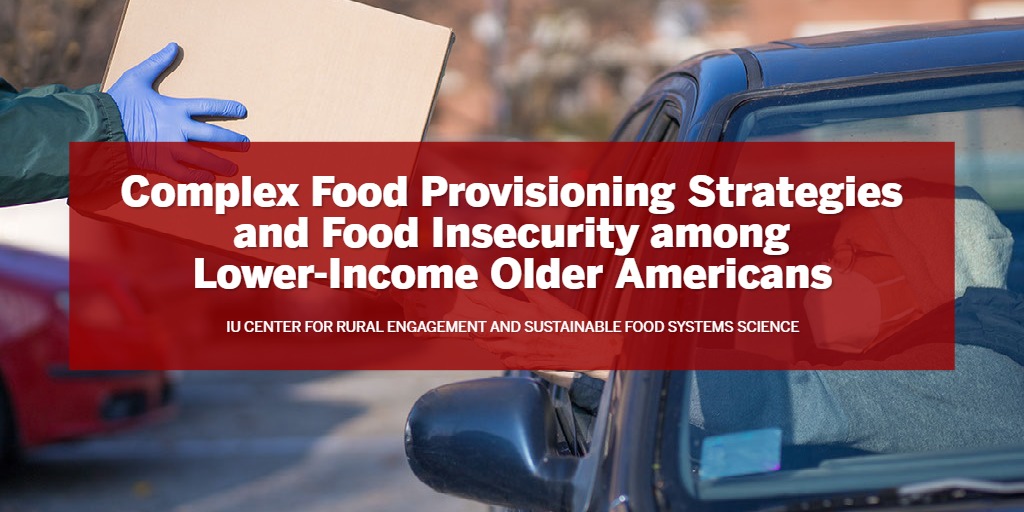- Phone:
- (812) 855-6303
- Email:
- knudsen@iu.edu
- Campus:
- IU Bloomington

Project abstract
Food insecurity has increased in recent decades among older adults in the United States, even with the growth of emergency food networks and the development of senior-focused federal nutrition assistance programs. Approximately 8% of U.S. households with older adults are food insecure, and more than 5 million older adults participate in the Supplemental Nutrition Assistance Program (SNAP). However, this demographic has been largely excluded from research on food insecurity. Our project will contribute a mixed methods study of food insecurity among seniors in rural Indiana, and a critical analysis of the Supplemental Nutrition Assistance Program, particularly regarding SNAP allocations as determined by the Thrifty Food Plan (TFP). Our project specifically investigates the barriers to accessing and consuming sufficient, culturally appropriate food among older adults, and the complex provisioning strategies used to mitigate household food insecurity. Provisioning strategies include participation in federal assistance programs as well as charitable/emergency food networks, sharing or trading food, gardening, and/or gleaning. We also consider provisioning to include coping strategies. This study will be the first to examine how older adults implement and coordinate those complex strategies, and to what effect.
Campus partners
Community partners
Counties involved
Crawford, Greene, Lawrence, Orange
